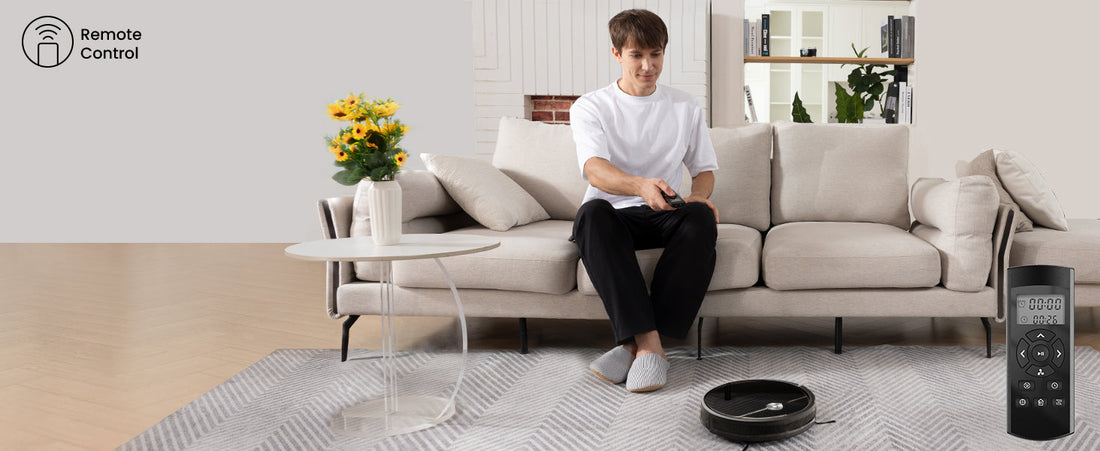Remember when cleaning appliances operated on a simple principle: power on, move around, hope for the best? Those days feel as dated as corded telephones. We've entered a new era where our cleaning tools don't just operate—they observe, analyze, and adapt. The secret agents behind this transformation? Smart sensors.
These tiny technological marvels have become the unsung heroes of home maintenance, working silently in the background to make cleaning smarter, not harder. Let's explore how these intelligent systems are reading your home's needs and delivering a clean that's both thorough and remarkably efficient.
The End of Blind Cleaning: How Sensors "See" Your Space
The most fundamental shift came when cleaning devices gained spatial awareness. Instead of bouncing randomly around a room like a pinball, modern machines build a understanding of their environment.
The star player here is LiDAR (Light Detection and Ranging) technology. Think of it as a sophisticated measuring tape that works at the speed of light. It creates a precise 360-degree map of your home by sending out invisible laser pulses and measuring how long they take to return. This allows the device to navigate with remarkable precision, remembering where it's been and where it needs to go next. The result? Methodical, efficient cleaning paths instead of chaotic randomness.
Beyond the Map: Sensors That Detect Actual Dirt
Mapping is impressive, but what about cleaning performance? This is where dirt detection sensors come into play. These acoustic or optical sensors are constantly "listening" or "looking" for concentrated dirt as the device moves across your floors.
When they detect a particularly dirty area—like that spot where your dog sheds or where cereal crumbs tend to gather—they trigger an automatic response. The device will slow down, increase suction power, and make multiple passes over that specific area until the sensors confirm the dirt is gone. It's like having a dedicated spot-cleaner built right in, one that works automatically without you ever pointing out the problem.
The Delicate Dance: Surface Detection and Adjustment
Our homes are made of varied surfaces—plush carpets, delicate hardwoods, slippery tiles. A one-size-fits-all approach doesn't work, and smart sensors know this.
Carpet detection sensors automatically increase suction power when moving from hard floors to carpets, ensuring deep-down dirt is pulled out. At the same time, brushrolls may adjust their speed to protect delicate rugs or better agitate high-pile carpet fibers. This automatic adjustment means optimal cleaning performance on every surface without you needing to manually change settings from room to room.
The Safety Net: Obstacle and Cliff Avoidance
Perhaps the most reassuring sensors are those designed to prevent disasters. Cliff sensors use infrared technology to detect sudden drops, like staircases, preventing your device from taking a tumble.
Meanwhile, advanced obstacle avoidance systems can detect and navigate around common household objects—from chair legs to stray shoes to charging cables. This doesn't just prevent getting stuck; it protects both your device and your belongings from damage.
This sophisticated sensor technology represents a fundamental shift from cleaning as a repetitive task to cleaning as an intelligent process. The goal is no longer just to cover area, but to understand it, analyze it, and clean it with purposeful precision.
At Vactidy, we've integrated this intelligent approach throughout our product design. The Vactidy Cleanova W11 Robot Vacuum Cleaner (also known as Vexilar W11 in the EU Market) exemplifies how sensors transform the cleaning experience. Its advanced LiDAR navigation creates a precise map for methodical, non-random cleaning, while its suite of other sensors allows it to adapt to different floor types and avoid obstacles.
The powerful 5000 Pa suction automatically adjusts to the task at hand, and the 2-in-1 vacuuming and wiping capability can be precisely directed thanks to this smart navigation. The result is a system that delivers up to 60 days of touch-free cleaning, not through brute force, but through intelligent awareness of your home's layout and cleaning needs.
The revolution isn't louder motors or bigger batteries—it's quieter, smarter sensors that are finally giving our cleaning tools the ability to see, think, and adapt.
Ready to experience cleaning that actually thinks for itself?

